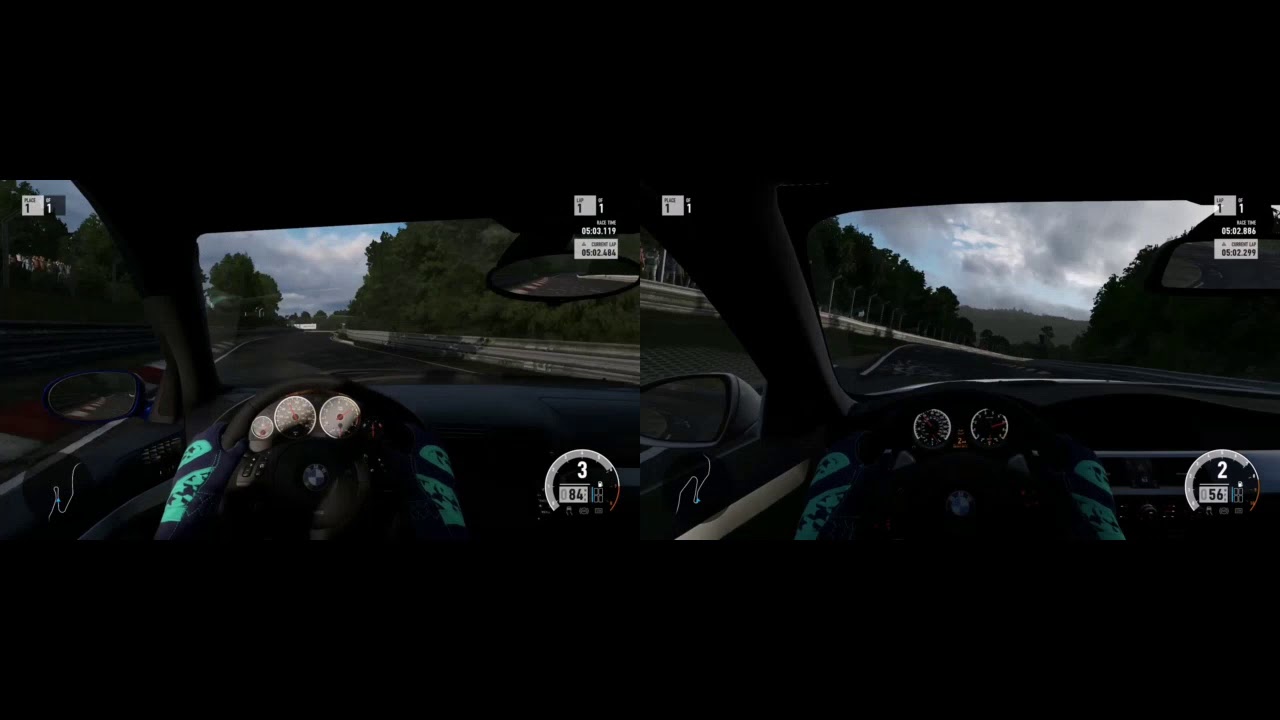
E39 M5
Introduced in 1998 at the Geneva Motor Show, the E39 generation of the M5 was the first M5 to use a V8 engine, resulting in an increase in power output to 294 kW (400 PS). It is also the first M5 to use aluminium front suspension components and a multi-link rear suspension. Production began in October 1998.
Production totalled to 20,482 cars from 1999 to 2003. Unlike its predecessors, the M5 was produced on the same assembly line as the regular 5 Series models at the Dingolfing factory in Germany.
The official performance figures are 0–97 km/h (60 mph) acceleration time of 4.8 seconds and an electronically limited top speed of 250 km/h (155 mph). In testing, an unrestricted M5 reached a top speed in excess of 300 km/h (186 mph). The E39 M5 recorded a Nurburgring lap time of 8:20
The M5 received the September 2000 facelift (for the 2001 model year) at the same time as the standard E39 models.[40] Changes included halogen "corona rings" in headlights (often called "Angel Eyes"), LED tail-lights and various interior upgrades. The mechanical specification was unchanged. For the subsequent two model years, changes were limited to the addition of new exterior colours (from September 2001) and the upgrade to a DVD-based navigation system (from September 2002).
Production of a "Touring" (wagon/estate) E39 M5 model was evaluated by BMW, and at least one prototype was developed (in Titanium Silver with a Black Exclusive leather interior). However the Touring did not reach production, due to financial considerations.
VS
E60 M5
The E60 M5 was introduced in 2005, with a V10 engine and 7-speed transmission linking the car with the BMW Sauber Formula One program. The E60 M5 was the world's first production sedan to use a V10 petrol engine. This generation of the M5 was also built in the E61 Touring (wagon) body style, which was only sold in Europe. The E63/E64 M6 coupé and convertible are based on a shortened version of the M5 chassis and largely use the same mechanical components.
The official 0 to 100 km/h (62 mph) acceleration figure is 4.7 seconds for the sedan, however magazine tests have recorded figures down to 4.1 seconds.The E60 M5 was the fastest 4-door sedan available at the time of its introduction.[49] Top speed is electronically restricted to 250 km/h (155 mph) but could be raised to 305 km/h (190 mph) with the optional M-driver's package.[50] The M5 has recorded a Nürburgring lap time of 8:13.
Upgrades over regular 5 Series models include a wider track, unique body panels, a colourful heads up display featuring navigation, control messages, speed, rpm and gear selection information, automated seat side bolsters, heated/ventilated seats and power rear curtain. The larger, flared front guards on either side also featured cooling vents, reminiscent of the 1970s BMW CSL. The wheels were of a 19-inch diameter and the car has quad exhaust pipes at the rear.
During its five-year production run, 20,589 units were built composing of 19,564 sedans and 1,025 wagons. The biggest market was the United States with 8,800 cars (all sedans), followed by Great Britain and Ireland with 1,776 cars and Germany with 1,647 cars.
The M5 model was designed by Karl John Elmitt and produced at the BMW Plant Dingolfing in Germany.
Engine
BMW S85 V10 engine
The BMW S85 is a 5.0 L (305 cu in) V10 engine which generates a power output of 373 kW (507 PS; 500 hp) at 7,750 rpm and 520 N⋅m (384 lb⋅ft) of torque at 6,100 rpm. The S85 was exclusively used in the E60 M5 (and related E63/E64 M6) and is not based on any other engine.
There are three driver-selectable engine modes: P400, P500 and P500 S. P400, the default start-up mode, limits the engine to 294 kW (400 PS; 394 hp). P500 increases power to the full 373 kW (507 PS; 500 hp). The P500 S mode keeps the engine at the same power output as the P500 mode but adds a more sensitive throttle response.
Transmission
The M5 uses the "SMG III" 7-speed single-clutch Electrohydraulic manual transmission, that performs gear shift in 65-250 milliseconds.
The SMG III includes launch control, a hill holder, shift-lock avoidance (by briefly disengaging the clutch during downshifts) and an automatic shift mode. However, many reviews have observed the automatic mode of the transmission at low or frequent stop start speeds as being less smooth than that of a conventional automatic transmission.
In North America, a conventional six-speed manual transmission was announced in October 2006. The SMG III remained the default transmission in North America, while the manual was available as a no cost option. The six-speed manual M5 was marginally slower in certain tests, as the dynamic stability control could not be disengaged unlike the SMG version[68][69] (however this was later made possible and a retrofit was released for earlier cars). In North America, the launch control for SMG transmissions is set at 1,500 rpm, instead of the 4,000 rpm used in other regions.























